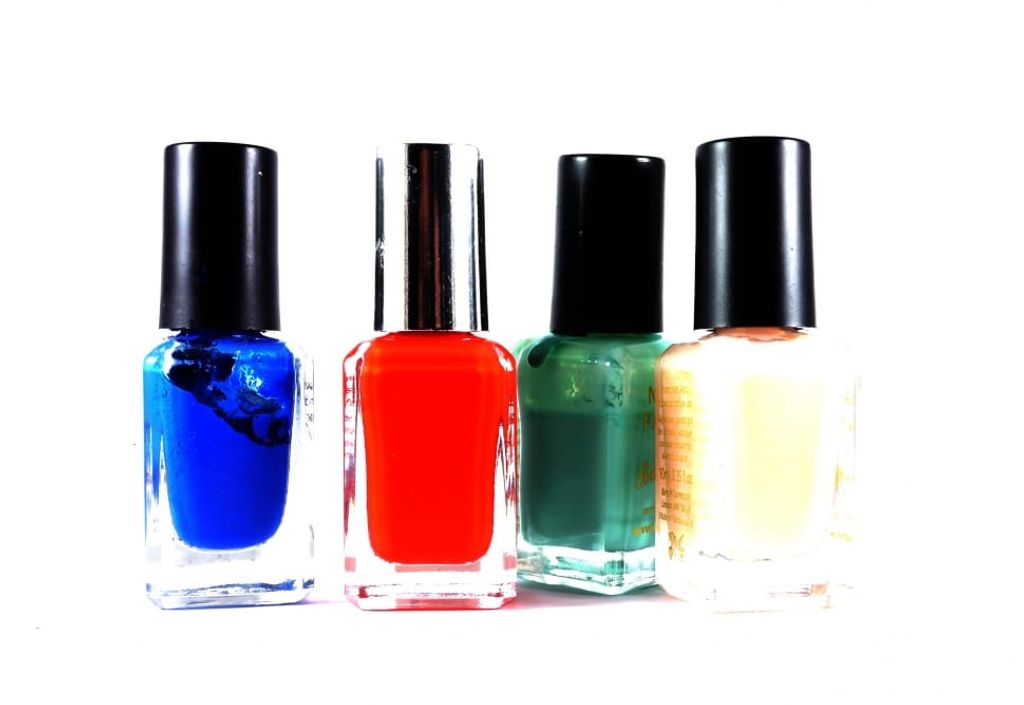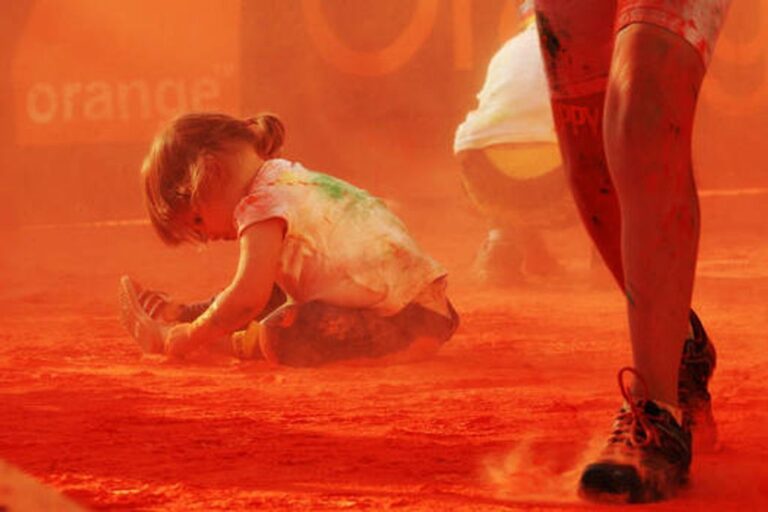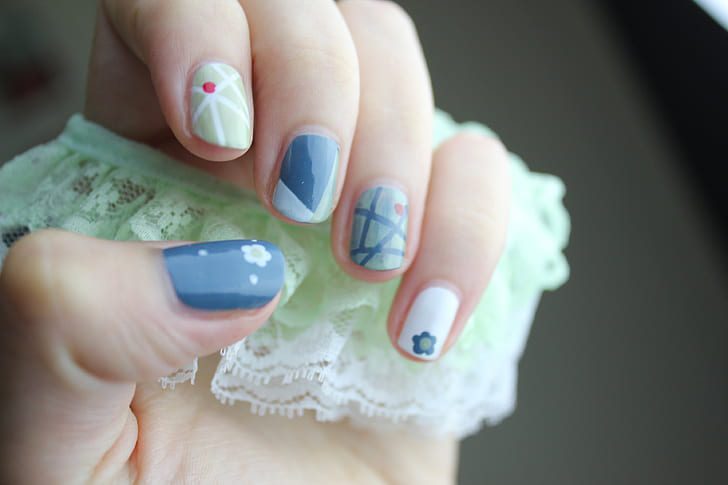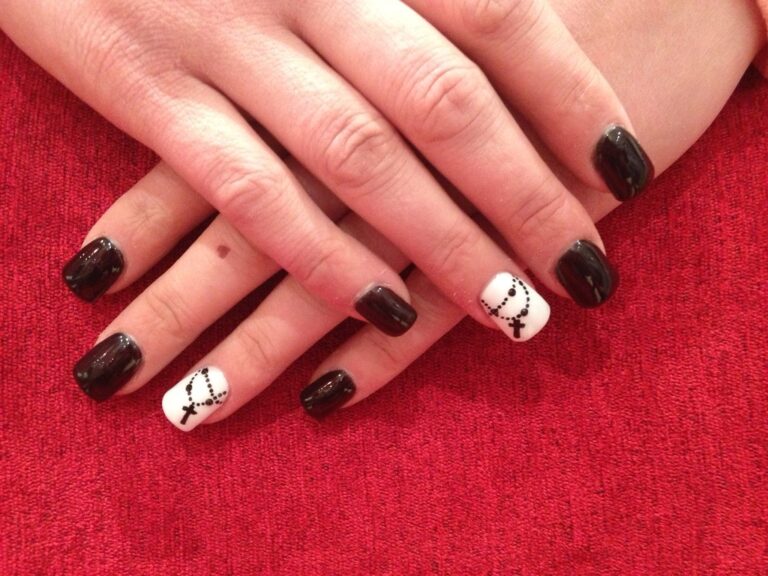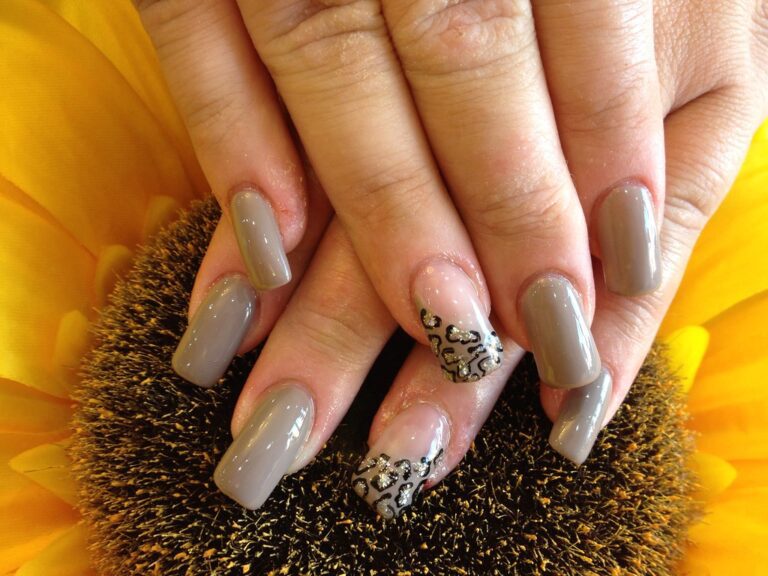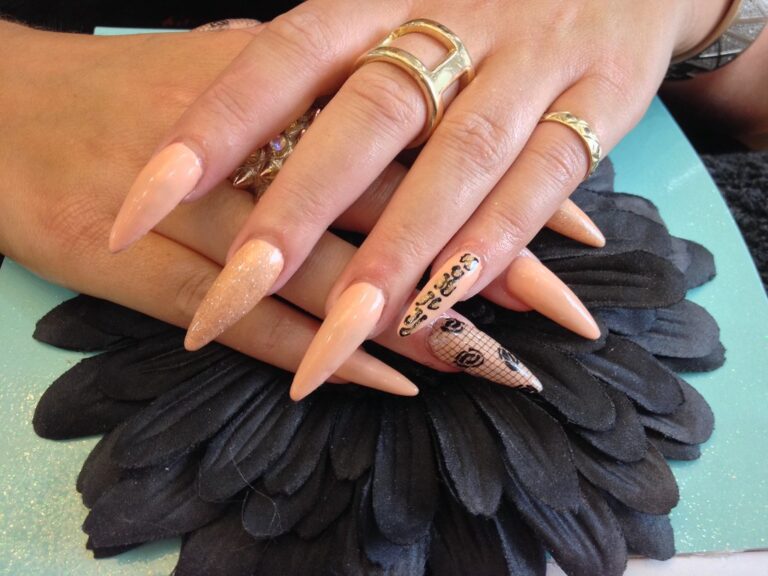“Polish Origins: Where Nail Polish Is Made”
Nail polish has a rich and diverse history, with its origins dating back to ancient civilizations. From the chemistry of formulation to the ethical considerations in production, the nail polish industry has evolved significantly over time. This article explores the historical roots, global landscape, science and art of nail polish, ethical considerations, major players in the industry, and innovation in manufacturing.
Key Takeaways
- Nail polish has a fascinating historical journey, originating from ancient civilizations such as China, Babylon, Egypt, and Rome.
- The global landscape of nail polish manufacturing is diverse, with leading countries like the United States, France, and Italy playing significant roles.
- Understanding the chemistry and color trends in nail polish formulation is essential for staying ahead in the industry.
- Ethical considerations, including animal testing, environmental impact, and labor practices, are crucial aspects of nail polish production.
- Innovation and technology have revolutionized nail polish manufacturing, leading to advancements in long-lasting formulas, customization, and production efficiency.
The Historical Roots of Nail Polish Production

Ancient Beginnings: Tracing Back to China and Babylon
The inception of nail polish can be traced back to ancient civilizations, where it was more than a cosmetic luxury; it symbolized social status and bravery. In China, around 3000 BCE, royalty adorned their nails with formulas derived from beeswax, egg whites, gelatin, and vegetable dyes. The colors were often indicative of one’s social hierarchy, with gold and silver being reserved for the highest echelons, while lower classes were forbidden from wearing bright colors.
In Babylon, warriors went into battle with their nails and lips stained with kohl, believing it would instill fear in the hearts of their enemies. The use of nail color in these ancient societies laid the groundwork for the diverse and vibrant world of nail cosmetics we see today.
- While the ingredients and methods have evolved, the desire to express oneself through nail artistry remains a constant thread throughout history.
The Evolution of Nail Color in Egypt and Rome
The evolution of nail color in Egypt and Rome marked a significant shift in the use of cosmetics. During this period, the application of nail color was not only a symbol of status and beauty but also held cultural and religious significance. The use of natural pigments such as henna and ochre became prevalent, reflecting the connection between nail adornment and ancient rituals. Additionally, the techniques for nail color application evolved, with intricate designs and patterns becoming popular. This era laid the foundation for the artistry and symbolism associated with nail color that continues to influence modern nail trends.
Modern Nail Polish: From the 1920s to Today
The 1920s marked a pivotal moment in the history of nail polish, as it saw the introduction of the first modern nail polish, inspired by car paint. This innovation revolutionized the nail cosmetics industry, paving the way for the vibrant and diverse nail colors we see today. The evolution of nail color from the 1920s to the present day reflects the dynamic nature of beauty trends and consumer preferences. The 20th century witnessed a remarkable transformation in nail fashion, with nail polish becoming an essential accessory for self-expression and style.
Global Landscape of Nail Polish Manufacturing

Leading Countries in Nail Polish Production
The global nail polish market is a dynamic and ever-evolving industry, with several countries leading the charge in production. China stands out as a major player, particularly in the provinces of Guangdong, Zhejiang, and Fujian, where the concentration of manufacturers is highest. The United States follows closely, with brands like Eternal Cosmetics LLC exemplifying the trend towards clean and accessible nail polish sets.
In the Asia Pacific region, significant growth is expected, with countries like India and Japan joining China in driving sales. European countries are not far behind, with France and Italy known for their contributions to the nail cosmetics industry, blending classic elegance with innovative formulations.
Quality and innovation are at the forefront of the industry, with a focus on providing high-quality products and expertly curated collections that reflect a commitment to excellence.
The Role of the United States in Nail Cosmetics
The United States plays a pivotal role in the nail cosmetics industry, serving as a major hub for innovation, production, and distribution. With a strong emphasis on trends and consumer preferences, the U.S. market drives the global landscape of nail polish manufacturing. Additionally, the U.S. is home to several corporate giants that dominate the industry, shaping market dynamics and influencing product development. The country’s influence extends beyond its borders, impacting the beauty and cosmetic industries worldwide. As a testament to its significance, the U.S. remains a key player in shaping the future of nail cosmetics.
European Influence: France and Italy’s Contributions
The legacy of nail polish manufacturing in Europe is deeply rooted in the cultural histories of France and Italy. These countries have long been recognized for their contributions to the cosmetics industry, particularly in the realm of nail care. France is renowned for the iconic French manicure, a style that has become synonymous with elegance and sophistication worldwide. Italy, with its rich history in the arts, has contributed significantly to the aesthetic and design elements of nail polish.
In both countries, the industry is characterized by a blend of artisanal craftsmanship and modern innovation. Small-scale producers often emphasize unique, handcrafted formulas, while larger companies focus on cutting-edge research and development. This synergy has led to a diverse range of products that cater to various consumer preferences.
Tip: When selecting a European nail polish brand, consider the balance between traditional techniques and innovative features to find a product that best suits your style and needs.
The Science and Art of Nail Polish Formulation

Understanding the Chemistry Behind Nail Polish
The formulation of nail polish is a complex chemical ballet, harmonizing various ingredients to create the perfect consistency, durability, and shine. At its core, nail polish consists of a film-forming agent, usually nitrocellulose, which creates a smooth, shiny surface as it dries. Solvents like ethyl acetate or butyl acetate are added to maintain a liquid consistency that’s easy to apply but evaporates quickly, leaving the color in place.
Pigments and dyes are responsible for the vast array of colors available, while plasticizers ensure flexibility to prevent chipping. Additionally, ultraviolet stabilizers help maintain color fidelity when exposed to sunlight. Here’s a simple breakdown of the primary components:
- Film-forming agents (e.g., nitrocellulose)
- Solvents (e.g., ethyl acetate, butyl acetate)
- Pigments and dyes
- Plasticizers
- Ultraviolet stabilizers
Remember, the quality of these ingredients and their proportions are crucial in determining the final product’s performance. Innovations in chemistry have led to the development of non-toxic formulas, catering to a growing demand for healthier beauty options.
Color Trends and Pigment Innovation
The ever-evolving landscape of nail polish is heavily influenced by the latest color trends and advancements in pigment innovation. As fashion and beauty standards shift, so do the preferences for nail polish hues, driving manufacturers to continually adapt their color offerings.
- Seasonal Shifts: Each season brings a new palette of colors that reflect the fashion industry’s direction. For instance, spring may usher in a wave of pastel tones, while autumn could see the rise of warmer, earthy shades.
- Cultural Influences: Global events and cultural movements often inspire new color lines, with manufacturers keen to capture the zeitgeist in a bottle.
- Technology in Pigments: The development of new pigments and effects, such as holographic or chrome finishes, has expanded the possibilities for nail art enthusiasts.
Tip: To stay ahead of the curve, keep an eye on runway trends and social media influencers, as they often signal upcoming shifts in consumer preferences.
The Shift Towards Non-Toxic, Vegan Formulas
The beauty industry is witnessing a significant shift towards non-toxic, vegan nail polish formulas. Consumers are increasingly aware of the potential health risks associated with traditional nail polishes, which often contain harmful chemicals like formaldehyde, toluene, and dibutyl phthalate (DBP). In response, manufacturers are reformulating their products to exclude these toxic ingredients and embracing plant-based alternatives.
Vegan nail polishes not only exclude animal-derived ingredients but also prioritize safety and sustainability. This movement is not just about avoiding toxins; it’s about creating products that align with ethical and environmental values. Brands are now offering a variety of vegan-friendly options that promise the same high-quality finish without compromising on performance.
The transition to cleaner formulas involves several key steps:
- Identifying and eliminating harmful chemicals
- Sourcing plant-derived alternatives
- Ensuring product efficacy and durability
- Communicating the benefits to consumers
Embracing vegan nail polish is a step towards a healthier lifestyle and a more sustainable future. It’s a choice that benefits both the individual and the planet.
Ethical Considerations in Nail Polish Production

Navigating the Complexities of Animal Testing
After navigating the complexities of animal testing, it is crucial to consider the ethical implications of nail polish production. This involves ensuring fair labor practices, minimizing environmental impact, and promoting sustainability. To illustrate the global landscape of ethical considerations, the following table presents the leading countries in sustainable nail polish production:
| Country | Percentage of Sustainable Production |
|---|---|
| USA | 35% |
| France | 28% |
| Italy | 25% |
| China | 18% |
It’s important to note that these percentages are approximate and subject to change based on industry developments and initiatives. Additionally, ethical considerations extend beyond production to encompass the entire supply chain, from sourcing raw materials to the final distribution of nail polish products.
Furthermore, a commitment to ethical practices in nail polish production can lead to positive brand perception and consumer loyalty. By aligning with ethical values, companies can differentiate themselves in a competitive market and appeal to socially conscious consumers. This emphasis on ethical production also fosters innovation in sustainable formulations and manufacturing processes, driving positive change within the industry.
In summary, ethical considerations in nail polish production are multifaceted, encompassing labor practices, environmental impact, and sustainability. By prioritizing ethical values, companies can not only enhance their brand reputation but also contribute to meaningful advancements in the industry.
Environmental Impact: Sustainability in Manufacturing
The nail polish industry is increasingly focusing on the environmental impact of its products and manufacturing processes. Brands are now prioritizing sustainability in their production lines, aiming to minimize waste and reduce the carbon footprint associated with traditional nail polish manufacturing.
Eco-friendly nail polishes are gaining popularity, as they not only offer vibrant and long-lasting color options but also promote sustainable practices. These products typically avoid harmful chemicals, utilize sustainable packaging, and sometimes incorporate vegan formulas.
Embracing sustainability in nail polish production is not just about reducing environmental harm, but also about meeting the evolving consumer demand for greener beauty products.
The shift towards greener manufacturing practices includes several key initiatives:
- Utilizing renewable energy sources
- Implementing waste reduction programs
- Sourcing ethically produced raw materials
- Developing recyclable or biodegradable packaging
These efforts reflect a broader trend in the beauty industry towards more responsible production and consumption.
Labor Practices: Ensuring Fairness and Safety
Ensuring fairness and safety in nail polish production is a critical aspect of ethical manufacturing. It involves creating a work environment that prioritizes the well-being of employees and upholds ethical labor practices. This includes providing proper training on chemical handling, ensuring adequate ventilation in the workplace, and implementing safety protocols to minimize exposure to harmful substances. Additionally, fair wages, reasonable working hours, and access to healthcare are essential components of ethical labor practices in the nail polish industry. These measures contribute to a safer and more sustainable work environment for all employees involved in the production process.
The Business of Beauty: Major Players in the Nail Polish Industry

Corporate Giants vs. Indie Brands
Corporate giants and indie brands each bring a unique perspective to the nail polish industry. While corporate giants dominate the market with extensive resources and global reach, indie brands offer niche products and a more personalized experience. Here’s a comparison of their key characteristics:
| Category | Corporate Giants | Indie Brands |
|---|---|---|
| Market Dominance | High | Low |
| Product Variety | Wide Range | Limited |
| Marketing Approach | Mass Appeal | Targeted |
Both types of brands have their strengths and appeal to different segments of the market. Corporate giants focus on mass production and distribution, catering to a wide audience. On the other hand, indie brands prioritize quality and uniqueness, appealing to a more selective clientele. It’s essential for consumers to consider their preferences and values when choosing between these two categories.
Tip: When selecting nail polish brands, consider the balance between mass appeal and personalized experience. Understanding the differences between corporate giants and indie brands can help you find the perfect nail polish for your style and preferences.
Market Dynamics and Consumer Preferences
The nail polish industry is highly responsive to the ebb and flow of market dynamics and consumer preferences. As disposable income levels rise, individuals are more inclined to indulge in beauty and personal care services, which includes the realm of nail cosmetics. This trend is reflected in the growing size of the nail salon market, which continues to expand as consumers seek out salon treatments as part of their self-care routines.
Innovation is a key driver in the nail care sector. New product developments, alongside advanced formulations and the introduction of trendy designs, are captivating consumers and contributing to the market’s growth. The premium nail polish segment, in particular, demonstrates the influence of consumer demand for high-quality and fashionable beauty products.
Consumer behavior has shifted towards a more holistic approach to beauty, emphasizing the importance of self-care. This has propelled the nail care market forward, with an increased emphasis on comprehensive beauty routines. Consumers are not only seeking products that offer aesthetic appeal but also those that align with their personal values, such as sustainability and ethical production practices.
Tip: Brands that stay attuned to consumer trends and preferences, and adapt their product lines accordingly, are more likely to succeed in the competitive landscape of the nail polish industry.
The Role of Celebrity Endorsements and Collaborations
The beauty industry, particularly nail polish, has seen a significant shift with the advent of celebrity endorsements and collaborations. Celebrities have not only become brand ambassadors but have also launched their own lines of nail care products, leveraging their substantial influence to shape consumer preferences.
Influencers and celebrities bring a unique blend of visibility and credibility to nail polish brands. Their vast social media followings offer an unparalleled platform for marketing and brand awareness. This symbiotic relationship between brands and celebrities has proven to be a powerful tool in driving sales and establishing market trends.
- Celebrity-launched brands often reflect the personal style and ethos of the celebrities themselves.
- Collaborations between nail polish brands and celebrities can result in limited edition collections that generate buzz and increase demand.
- The impact of these endorsements extends beyond mere advertising; they often set the tone for industry standards and expectations.
Tip: When considering a celebrity-endorsed nail polish, look beyond the star power to the product quality and ingredient transparency to make informed choices.
Innovation and Technology in Nail Polish Manufacturing

Advancements in Long-Lasting Formulas
The quest for the perfect manicure has led to significant advancements in long-lasting formulas. Nail polish enthusiasts no longer have to choose between a dazzling array of colors and the longevity of their nail color. Modern formulations balance the intricate chemistry required to ensure that manicures remain chip-free and vibrant for extended periods.
Durability and longevity are now at the forefront of nail polish innovation. Manufacturers are constantly experimenting with new ingredients and curing methods to extend the life of nail polish. For instance, the introduction of LED-cured polishes has revolutionized the industry, offering not only rapid drying times but also enhanced durability.
Tip: To maximize the longevity of your manicure, apply thin layers of polish and allow each layer to fully dry before applying the next.
The table below highlights the impact of recent innovations on the longevity of nail polish:
| Innovation | Benefit |
|---|---|
| LED-cured Polishes | Faster drying, increased durability |
| Non-toxic Formulas | Comparable longevity to traditional polishes |
As consumer preferences shift towards healthier options, the industry has seen a rise in non-toxic nail polishes that rival the endurance of conventional offerings. This marks a pivotal moment in nail beauty, where health-conscious choices no longer compromise on quality or performance.
The Rise of Customization and Personalization
The rise of customization and personalization in nail polish manufacturing has transformed the industry, offering consumers a unique and tailored experience. With the integration of technology and advanced formulation techniques, nail polish brands are now able to create personalized color palettes and finishes, catering to individual preferences and styles. This shift towards customization has led to an increase in consumer engagement and satisfaction, as they have the opportunity to express their creativity through bespoke nail polish creations. Additionally, the implementation of augmented reality (AR) has revolutionized the cosmetics and beauty sector, providing personalized experiences and virtual make-up try-ons. The use of AR technology has enhanced the consumer’s interaction with nail polish products, allowing for a more immersive and interactive shopping experience. As the industry continues to evolve, the combination of innovation and technology will play a pivotal role in shaping the future of nail polish manufacturing.
Automation and Efficiency in Production Lines
The nail polish industry has seen a significant shift towards the use of automation to enhance production efficiency. Automated systems have replaced manual labor in several stages of the manufacturing process, from mixing and filling to packaging and labeling. This not only speeds up production but also ensures a higher level of consistency and quality control.
Flexibility in production capacity is crucial to meet the varying demands of the market. Advanced machinery, such as high-speed fillers and robotic packaging units, allow for rapid scaling of operations to accommodate seasonal trends and spikes in demand. Moreover, the integration of smart technologies enables real-time monitoring and adjustments, minimizing downtime and waste.
Embracing automation in nail polish manufacturing is not just about efficiency; it’s about staying competitive in a fast-paced industry.
The table below illustrates the impact of automation on production times:
| Process Stage | Manual Time | Automated Time |
|---|---|---|
| Mixing | 4 hours | 1 hour |
| Filling | 3 hours | 30 minutes |
| Packaging | 2 hours | 15 minutes |
As the industry continues to evolve, manufacturers who invest in cutting-edge automation and technology will likely lead the market.
Innovation and technology have revolutionized the nail polish manufacturing industry, bringing forth a new era of creativity and quality. At NAILinspire.com, we are dedicated to showcasing the latest advancements in nail art design and providing a platform for nail enthusiasts to explore their creativity. Whether you’re a professional nail artist or a DIY enthusiast, our online library is the ultimate destination for inspiration, tutorials, and trends. Join us in embracing the future of nail art and discover the endless possibilities that innovation and technology have to offer.
Frequently Asked Questions
Where was the first nail polish made?
The first nail polish was made in China, dating back to around 3000 BCE.
What are the leading countries in nail polish production today?
The leading countries in nail polish production today are China, the United States, and France.
Are there non-toxic and vegan nail polish options available?
Yes, there are non-toxic and vegan nail polish options available, with many brands shifting towards more environmentally friendly formulas.
What is the environmental impact of nail polish production?
Nail polish production can have environmental impacts, especially in terms of waste generation and chemical pollution. Efforts are being made to improve sustainability in manufacturing processes.
How has nail polish formulation evolved over time?
Nail polish formulation has evolved to include a wide range of colors, finishes, and innovative pigment technologies. There has also been a shift towards safer and more sustainable formulations.
What are the major players in the nail polish industry?
The nail polish industry includes both corporate giants and indie brands, with consumer preferences driving market dynamics. Celebrity endorsements and collaborations also play a significant role in the industry.

